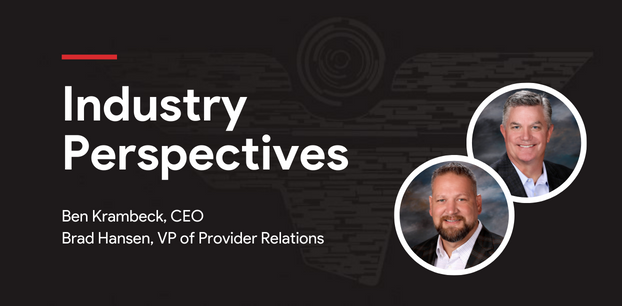
Purchasing Power: The Economics of Caring about Employees
With 2022 coming to a close, we continue to watch the economic winds affecting our customers with concern for 2023. While inflation seems to be heading in the right direction (i.e., November’s 7.1% rate is significantly better than the frightening 9.1% experienced earlier in 2022), the overall impact on our economy cannot be understated. Consider the following changes in just one year:
- A gallon of milk is up 31%
- A loaf of bread is up 22%
- A dozen eggs are up 122%
- Rents are up 7.1% nationally, with some urban areas much higher
These kitchen table examples illustrate the almost-universal price increases impacting the budget for most American families, especially the working class. While the underlying causes can be debated, the consensus has emerged that inflation is not the transitory, post-pandemic bubble we were told would soon give way to the strong economy of the pre-pandemic years. Rather, it now appears that inflation is more fundamental, and the Federal Reserve Board is at last fully engaged in addressing the situation with some tough medicine in the form of increased interest rates. To that end, December’s 0.5% increase marked the seventh interest hike in the past twelve months, and though future increases may be less than the increases already experienced this year, the Fed is likely to have more hikes in the coming months.
So, what does this mean for health insurance? While the cost of health insurance increased in 2022, surprisingly, the rate of increase did not surge like other family necessities listed above. In fact, a recent study by the Kaiser Family Foundation (KFF) reported that health insurance premiums increased by six percent based on a large, broad-based survey of employers that provide health insurance. While this increase is still high, it is similar to the increases in previous, non-pandemic years. So, looking at the year through this myopic lens, 2022 was a “typical” year for health care spend. But, of course, nothing is really “typical” anymore.
A big difference in 2022 is the economic struggles coincide with an extremely tight labor market. As a result, employers are reluctant to pass any of the increase on to employees through increases in employee contributions toward premiums and out-of-pocket increases. Instead, employers shouldered the total increase opting to avoid the risk of losing the ability to recruit and retain workers. In fact, the same KFF study revealed only 25% of employers were shifting any of the increase to employees (down from a “typical” number of nearly 75%). Common sense suggests this approach is only a temporary fix, and employers will need to find a long-term fix in 2023 and beyond.
We are already seeing signs of the pressure mounting for employers, and there are fewer options for absorbing the increases like they did in 2022. Many employers are getting substantially higher sticker shock when given their 2023 renewals. In fact, we are talking with employers facing renewals of upwards of 15-20% and some even higher based on the specific industry and circumstances. These increases typically come with the standard explanation that providers are demanding higher reimbursement. Of course, this ignores the fact that large insurance carriers are reporting record earnings (e.g., United reported a $5.3 billion profit in Q3, up 28% from last year). With many employers having absorbed the increases in 2022, the pressure is mounting, and they need effective alternatives.
There is, however, reason for optimism, and we will never doubt the ability of American problem-solving. Whether or not the result of the Fed’s tough medicine or other factors, inflation seems to be easing. Also, the labor market looks to be softening, so employers considering creative solutions to health insurance will be back at it in 2023. Finally, a divided government likely foreshadows that despite all the election rhetoric, very little will get done that can knock America back off the rails to recovery.
The bottom line is tough times are ahead for families trying to make ends meet and for employers attempting to weigh those struggles in their health insurance options. ClaimDOC stands ready to work with employers who are ready to think differently about their health plan. It’s times like these when truly effective benefits consultants will act more as business consultants and work to open employers’ eyes to network replacement by overcoming the same stale objections fed to them by incumbent brokers. Objections and narratives created by large insurance carriers and blindly followed by ineffective brokers are increasingly being defeated by brokers acting as true consultants.
There has never been a better time to look at alternatives, and we continue to offer the most comprehensive hybrid model that supports members, protects financial savings, and builds direct relationships with the very best health systems. Our mission-based approach will ensure your employees and their families have access to the best care at affordable prices. We will continue to innovate and look forward to partnering with those who share this mission to make 2023 a great year despite economic pressures!